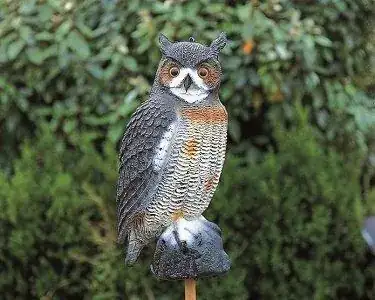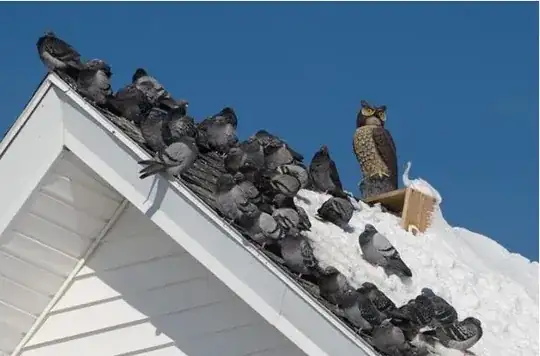They've been shown to only be effective when moved frequently, and even then, some of the biggest pest species like grackles and pigeons catch on quickly and they become completely ineffective, especially when actual predators are scarce. We tried to use them in a garden a couple years ago with very little success, even moving them around every few days.
The bigger question when using them for antennas is, why? If you have issues with birds building nests in your tower or on top of your beams, other methods of exclusion would probably be far more effective. Fiberglass window screen wrapped around the tower at spots where they might try to nest, such as around the rotor plate, ought to do the trick. A few bamboo kabob skewers taped to your beam in the areas where there are big enough flat spots for a nest, such as where the boom meets the elements should also deter nesting there.
If you're concerned about them sitting on the antenna, you aren't likely to do them any harm, and it's pretty unlikely that less than a dozen good sized birds like pigeons will change the characteristics of the antenna noticeably. If droppings are an issue, that could be a bit trickier, but something like a bit of cloth stuck to a motor that spun a few times intermittently to create motion near their favorite perches should deter them. One of the most effective means we discovered was a motion activated lawn sprinkler, which would obviously be impractical to implement on top of your tower, but you can extrapolate other ways of creating motion and/or noise on queue to scare them off.

